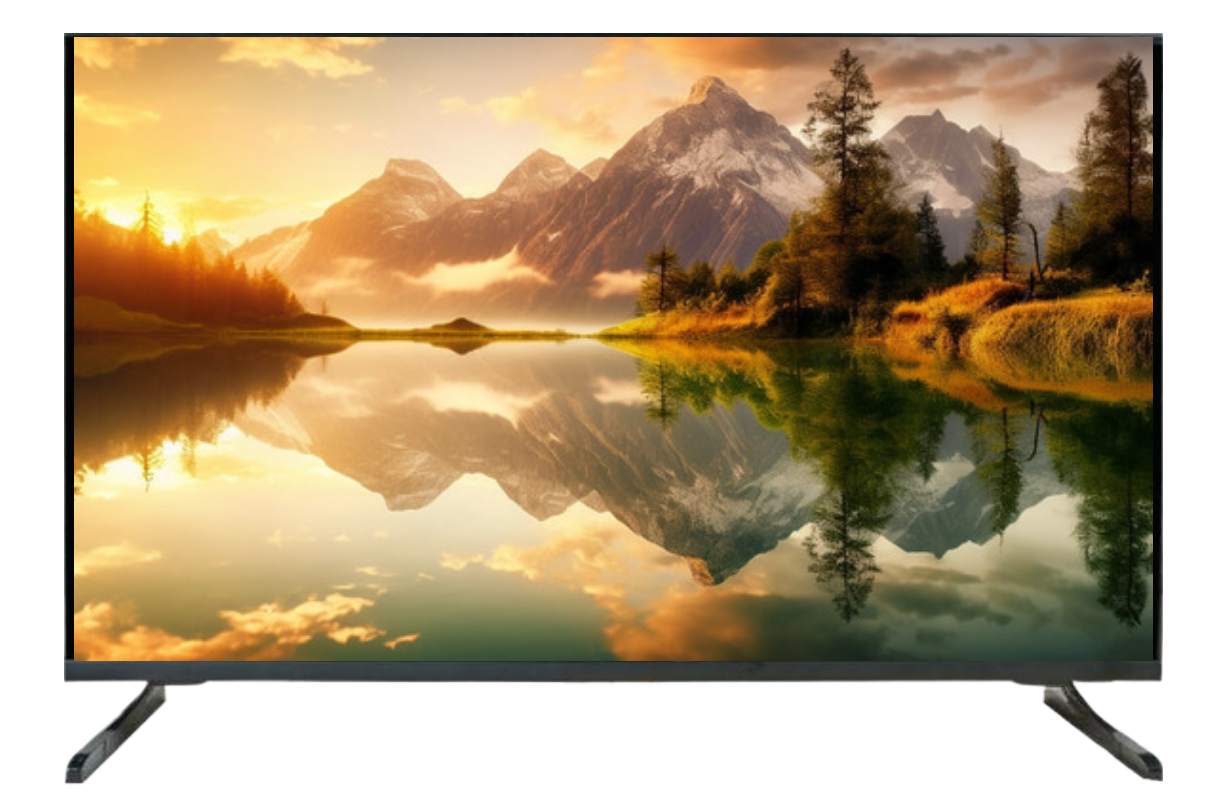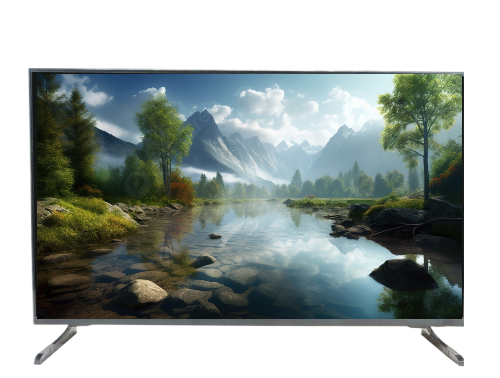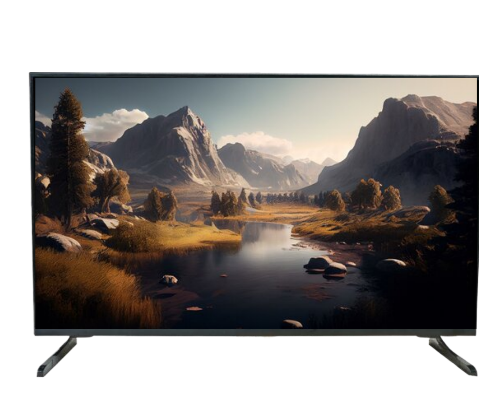Our Products
GET TO KNOW US BETTER
HD READY LED TVs
HD READY LED TVs
HD Ready LED TVs have a display resolution of 720p, which translates to 1280 x 720 pixels. Here's a brief overview of the key aspects of HD Ready LED TVs.

HD READY LED TVs
Available sizes :- 17" 19" 24" 32" Inch
Resolution:-
HD Ready resolution, often referred to as 720p, consists of 1280 horizontal pixels and 720 vertical pixels, resulting in a total of 921,600 pixels. While it is not as high as Full HD (1080p) or 4K resolutions, HD Ready still provides a reasonably clear and detailed picture, especially on smaller screens.
Display Technology:-
HD Ready TVs typically use LED backlighting technology for better brightness, color reproduction, and energy efficiency. LED technology allows for slimmer designs and improved contrast ratios compared to older display technologies.
Basic Connectivity:
HD Ready TVs come with basic connectivity options, including HDMI ports for connecting external devices like gaming consoles and Blu-ray players, as well as USB ports for multimedia playback. They may also include analog inputs for older devices.
Affordability:-
HD Ready TVs are often more budget-friendly compared to higher-resolution models like Full HD or 4K. This makes them a suitable option for individuals looking for an economical television solution.
Standard Remote Control:-
The remote controls for HD Ready TVs are standard, focusing on essential functions such as changing channels, adjusting volume, and controlling the power. They do not include advanced features like voice control commonly found in higher-end models.
Broadcasting Standard:-
HD Ready resolution aligns with the HD broadcast standard, making it suitable for receiving and displaying high-definition television channels. However, it may not provide the same level of detail as Full HD or 4K for certain types of content.
Compact Screen Sizes:-
HD Ready TVs are commonly found in smaller screen sizes, such as 32 inches or below. This resolution is often sufficient for screens of these sizes, providing a good balance between picture clarity and affordability.
Multimedia Playback:-
HD Ready TVs can often play multimedia content through USB ports. While they may not support the same range of file formats as higher-end models, they still offer basic playback functionality for photos, videos, and music.
Suitability for Small Rooms:-
Due to their resolution and screen size, HD Ready TVs are suitable for smaller rooms or spaces where a larger, higher-resolution display may not be necessary.
In summary, HD Ready TVs provide a budget-friendly option for those who prioritize affordability and are content with a 720p resolution. They are suitable for smaller screen sizes and offer a basic set of features for everyday television viewing.

SMART HD READY LED TVs
SMART HD READY LED TVs
Smart LED TVs, or Smart TVs for short, combine traditional television features with internet connectivity and advanced computing capabilities. Here are some key aspects of Smart LED TVs.
SMART HD READY LED TVs
Available sizes :- 24" 32" 40" Inch
Smart LED TVs, or Smart TVs for short, combine traditional television features with internet connectivity and advanced computing capabilities. Here are some key aspects of Smart LED TVs:-
Display Technology:-
Smart LED TVs use Light Emitting Diodes (LEDs) for backlighting, providing better energy efficiency, contrast, and thinner designs compared to older technologies like LCD (Liquid Crystal Display).
Resolution:-
HD Ready resolution, often referred to as 720p, consists of 1280 horizontal pixels and 720 vertical pixels, resulting in a total of 921,600 pixels. While it is not as high as Full HD (1080p) or 4K resolutions, HD Ready still provides a reasonably clear and detailed picture, especially on smaller screens.
Internet Connectivity:-
Smart TVs are equipped with built-in Wi-Fi or Ethernet ports, allowing them to connect to the internet. This connectivity enables access to online content, streaming services, and other web-based features.
Operating System:-
Smart TVs have their own operating systems or platforms that control the user interface and functionalities. Popular operating systems include Android TV (used by various manufacturers), and others.
App Support:-
Smart TVs support a variety of applications, just like smartphones or tablets. You can access streaming services such as Netflix, Hotstar, Amazon Prime Video, and many others directly on your TV. Additionally, some TVs allow you to download and install apps from an app store.
Voice Control:-
Many Smart TVs come with voice control features, allowing users to interact with their TV using voice commands. This can include changing channels, adjusting volume, or searching for content.
Screen Mirroring:-
Smart TVs often support screen mirroring or casting, enabling you to display content from your smartphone, tablet, or computer directly onto the TV screen.
USB and HDMI Ports:-
Smart TVs typically include multiple USB and HDMI ports, providing connectivity options for external devices like gaming consoles, Blu-ray players, sound systems, and USB drives.
Updates and Upgrades:-
Manufacturers regularly release firmware updates to enhance performance, add new features, and improve security. Some Smart TVs also allow for software upgrades to the latest operating system versions.
Remote Control:-
Smart TVs come with remote controls, and some models may also offer smartphone apps for remote control and navigation.
Gaming:-
Some Smart TVs support gaming applications, and with the advent of more powerful processors and graphics capabilities, they can deliver a decent gaming experience.
Integration with Smart Home Devices:-
Many Smart TVs can be integrated into smart home ecosystems, allowing you to control compatible devices like lights, thermostats, and cameras directly from your TV.
In summary, Smart LED TVs combine high-quality display technology with internet connectivity and advanced features, providing users with a more interactive and connected entertainment experience.
FULL HD SMART LED TVs
FULL HD SMART LED TVs
Full HD Smart LED TVs, also known as 1080p Smart TVs, combine the features of Smart TVs with a display resolution of 1920 x 1080 pixels. Here's a brief overview of the key aspects of Full HD Smart LED TVs:

FULL HD SMART LED TVs
Available sizes :- 24" 32" 40" 43" Inch
Resolution:-
Full HD resolution, also referred to as 1080p, consists of 1920 horizontal pixels and 1080 vertical pixels, resulting in a total of 2.1 million pixels. This resolution provides clear and detailed images, especially on smaller to mid-sized screens.
Display Technology:-
Full HD Smart LED TVs utilize LED backlighting technology for enhanced brightness, color accuracy, and energy efficiency. LED technology allows for thinner screens and better contrast ratios compared to older LCD technologies.
Smart Features:-
These TVs come equipped with Smart TV functionalities, including built-in Wi-Fi or Ethernet connectivity. Users can access online streaming services, apps, and other internet-based content directly from the TV.
Operating System:-
Full HD Smart LED TVs run on specific operating systems or platforms designed by the TV manufacturer. Common operating systems include webOS (LG), Tizen (Samsung), Android TV (used by various manufacturers), and others.
App Support:-
Users can download and install a variety of applications on Full HD Smart LED TVs. Popular streaming services like Netflix, Hulu, and Amazon Prime Video are commonly supported, along with other entertainment and utility apps.
Remote Control:-
Smart LED TVs come with remote controls that often include additional buttons for quick access to Smart TV features. Some models may also support voice control for hands-free navigation.
Connectivity:-
Full HD Smart LED TVs typically offer a range of connectivity options, including HDMI ports for external devices like gaming consoles and Blu-ray players, USB ports for multimedia playback, and audio output options.
Gaming Capabilities:-
While not as advanced as 4K TVs, Full HD Smart LED TVs can still provide a decent gaming experience. They often support gaming consoles and may offer features like low input lag for responsive gaming.
Audio Quality:-
The audio quality on Full HD Smart LED TVs varies between models. Some may have built-in audio technologies to enhance sound quality, while others may provide basic audio output.
Energy Efficiency:-
LED backlighting contributes to the energy efficiency of Full HD Smart LED TVs, making them more environmentally friendly compared to older technologies like plasma or CCFL (Cold Cathode Fluorescent Lamp) LCD TVs.
In summary, Full HD Smart LED TVs offer a balance between resolution, smart features, and affordability. They are suitable for users who want a clear and detailed picture along with the convenience of internet connectivity and Smart TV capabilities.

4K UHD SMART LED TVs
4K UHD SMART LED TVs
4K Smart LED TVs, also known as Ultra High Definition (UHD) TVs, offer an even higher resolution compared to standard high-definition televisions. Here's an overview of the features and characteristics of 4K Smart LED TVs:
4K UHD SMART LED TVs
Available sizes :-43" 50" 55" 65" 75" 85" Inch
4K Smart LED TVs, also known as Ultra High Definition (UHD) TVs, offer an even higher resolution compared to standard high-definition televisions. Here's an overview of the features and characteristics of 4K Smart LED TVs:
Resolution:-
The defining feature of 4K TVs is their resolution, which is approximately 3840 x 2160 pixels. This is four times the resolution of Full HD (1080p) TVs, resulting in incredibly sharp and detailed images.
Display Technology:-
Like standard Smart LED TVs, 4K Smart LED TVs utilize Light Emitting Diodes (LEDs) for backlighting. The increased pixel density in 4K displays enhances picture clarity and sharpness.
HDR (High Dynamic Range):-
Many 4K Smart LED TVs support High Dynamic Range, which allows for a broader range of colors and improved contrast. HDR technology enhances both the brightest and darkest parts of an image, providing a more lifelike and dynamic viewing experience.
Wide Colour Gamut:-
4K TVs often feature a wider color gamut, enabling them to display a more extensive range of colors. This contributes to more vibrant and realistic images, especially when paired with HDR content.
Upscaling Technology:-
To make the most of 4K resolution, some TVs incorporate upscaling technology. This feature enhances the quality of lower-resolution content, making it appear closer to true 4K quality.
High Refresh Rates:-
Many 4K Smart LED TVs come with high refresh rates (measured in Hertz), reducing motion blur and improving the overall smoothness of fast-moving scenes, which is particularly beneficial for gaming and sports.
Smart Features:-
4K Smart LED TVs include all the features of standard Smart TVs, such as internet connectivity, app support, and voice control. The smart functionalities are often powered by advanced processors to ensure smooth navigation and app performance.
HDMI Ports:-
4K TVs typically have multiple HDMI ports that support the latest HDMI standards. This is important for connecting various 4K-compatible devices like gaming consoles, Blu-ray players, and streaming devices.
Gaming Capabilities:-
With their high resolution and improved processing power, 4K Smart LED TVs are popular among gamers. Some models may include gaming-specific features like low input lag and support for variable refresh rates.
Audio Quality:-
While the focus is often on the display, many 4K Smart LED TVs also prioritize audio quality. Some models feature advanced sound technologies or support for external sound systems to enhance the overall viewing experience.
In summary, 4K Smart LED TVs offer a significantly higher resolution, improved color reproduction, and advanced features compared to standard high-definition TVs, providing a more immersive and visually stunning entertainment experience.
